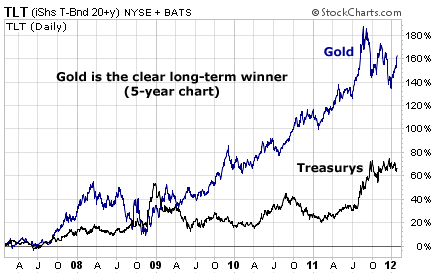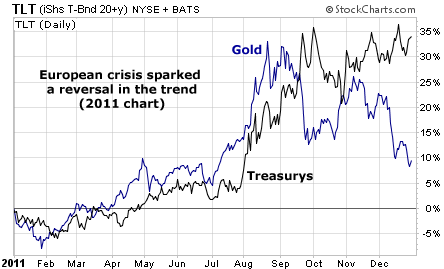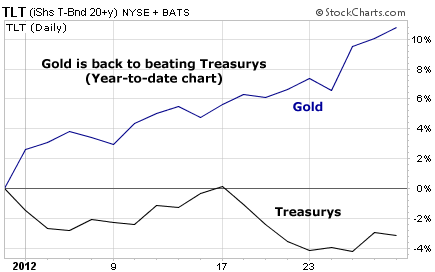 In 2008, Porter Stansberry started writing extensively about the mounting U.S. government debt, inflation, and the subsequent rise in gold prices. He also coined the phrase the “End of America” to describe the scenario…
In 2008, Porter Stansberry started writing extensively about the mounting U.S. government debt, inflation, and the subsequent rise in gold prices. He also coined the phrase the “End of America” to describe the scenario…
The huge inflation underway right now will be what I call “The End of America.” I don’t mean an end to our political union – I mean an end to the special role America has played in the global economy since World War II. The coming great inflation will destroy America’s economic leadership. It will lead – eventually – to the return of settling international obligations in gold instead of paper dollars.
And this will happen much faster than anyone expects. By the time Obama leaves office, you will not be able to exchange dollars for any sound currency in the world without permission from the U.S. government. The price of gold will be well over $2,500 per ounce. Most importantly, commodities will no longer be priced in dollars either, but instead in the currencies of the leading producer. Americans haven’t experienced anything like this since the Great Depression. – Stansberry’s Investment Advisory, December 2008
We’ve covered the theme for the past three years. Today, we’ll review “the only trend that matters for the next decade” – shorting the long bond against gold. As you can see from the five-year chart below, gold has crushed U.S. Treasurys, measured using the iShares 20+ Year Treasury Bond (TLT)…

Starting in July, gold rallied from around $1,450 an ounce to $1,900 an ounce in just three months. The spike was unsustainable. And as fears escalated, the hot money fled gold for Treasurys.
[ad#Google Adsense 336×280-IA]We warned this trade would be volatile. And we weren’t surprised to see “the trend” take a breather… No trend goes uninterrupted forever (though gold did close its 11th-straight year for a gain last year)…
Starting in September, fears of a European collapse caused Treasurys to rally and gold to plunge. Treasurys bested gold by more than 2,400 basis points (a basis point is 1/100 of a percent) in 2011.
The U.S. dollar is still the world’s reserve currency. As such, investors treat it as the ultimate safe-haven asset.
The benchmark 10-year Treasury ended 2011 yielding less than 2% for the first time since at least 1977. It gained 17% for the year. The 30-year Treasury bond was one of the best investments of 2011. (Of course, the Federal Reserve has been buying this debt nonstop to push down long-term interest rates.) The long bond returned 35% in 2011. Gold returned 8%.

The market was paying too much for perceived safety today. Last month, the U.S. Treasury sold five-year Treasury Inflation-Protected Securities (TIPS) for a record-low yield of negative 0.877%.
And so far this year, the trend is moving back in our favor.

Our long-term outlook hasn’t changed. Given the Treasury market’s run last year and the millions of dollars it’s going to take to save Europe, our conviction for “the trend” is only strengthened.
Regards,
Sean Goldsmith
Sponsored Ad: This article was pulled from the daily S&A Digest, produced by Stansberry & Associates. The Digest comes free with a subscription to Stansberry’s Investment Advisory. In the January issue, Porter laid out a five-step strategy to protect yourself and profit from the global currency crisis. To access this information, consider a subscription to Stansberry’s Investment Advisory by clicking here.
Source: The Growth Stock Wire


